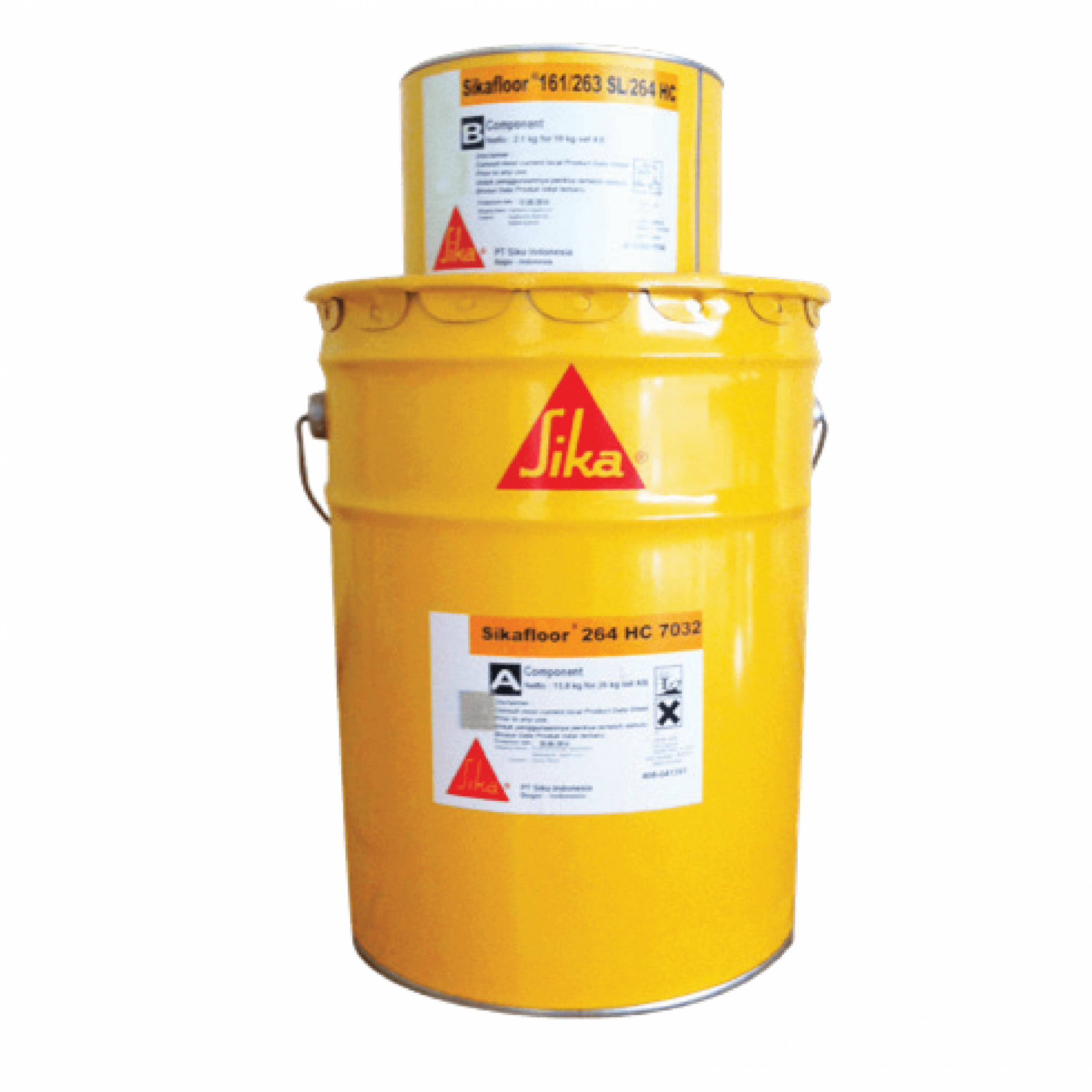

Product Code : 6740070501
Sikafloor® 264 HC is a two-part, coloured epoxy resin that may only be used by experienced professionals. Advantage: It is easy to use and apply, and provide a glossy finish. Featuring good chemical and mechanical resistance, it also makes the surface highly resistant to slipping.
Sikafloor® 264 HC is specifically made for use as roller coat on concrete, cement screeds with normal up to medium heavy wear such as storage and assembly halls, maintenance workshops, garages and loading ramps. In addition, it is used as a seal coat for broadcast systems, such as multi-story and underground car parks, maintenance hangars, wet process areas such as beverage and food industry.
Sikafloor® 264 HC is packaged as two sets of 15 kilograms and 20 kilograms with a shelf life of up to 24 months from the date of production. It is advised to store Sikafloor® 264 HC in original, unopened, undamaged and sealed packaging in cool and dry conditions at temperatures between +18 °C and +30 °C.
Prior to application, The concrete substrate must be sound and of sufficient compressive strength with a minimum pull off strength of 1.5 N/mm². The substrate must be clean, dry and free of any contaminants such as dirt, oil, grease, coatings and surface treatments, etc. Concrete substrates must be prepared mechanically using abrasive blast cleaning or scarifying equipment to remove cement laitance and achieve an open textured surface. Weak concrete must be removed and surface defects such as blowholes and voids must be fully exposed. Repairs to the substrate, filling of blowholes/voids and surface levelling can be carried out using appropriate products from the Sikafloor®, Sikadur® and Sikagard® range of materials. The concrete or screed substrate has to be primed or levelled in order to achieve an even surface. All dust, loose and friable material must be completely removed from all surfaces before application of the product, preferably by brush and/or vacuum.
Prior to mixing stir part A mechanically. When all of part B has been added to part A, continuously mix for 3 minutes until a uniform mix has been achieved. To ensure thorough mixing pour materials into another container and mix again to achieve a consistent mix. Over mixing must be avoided to minimize air entrainment.